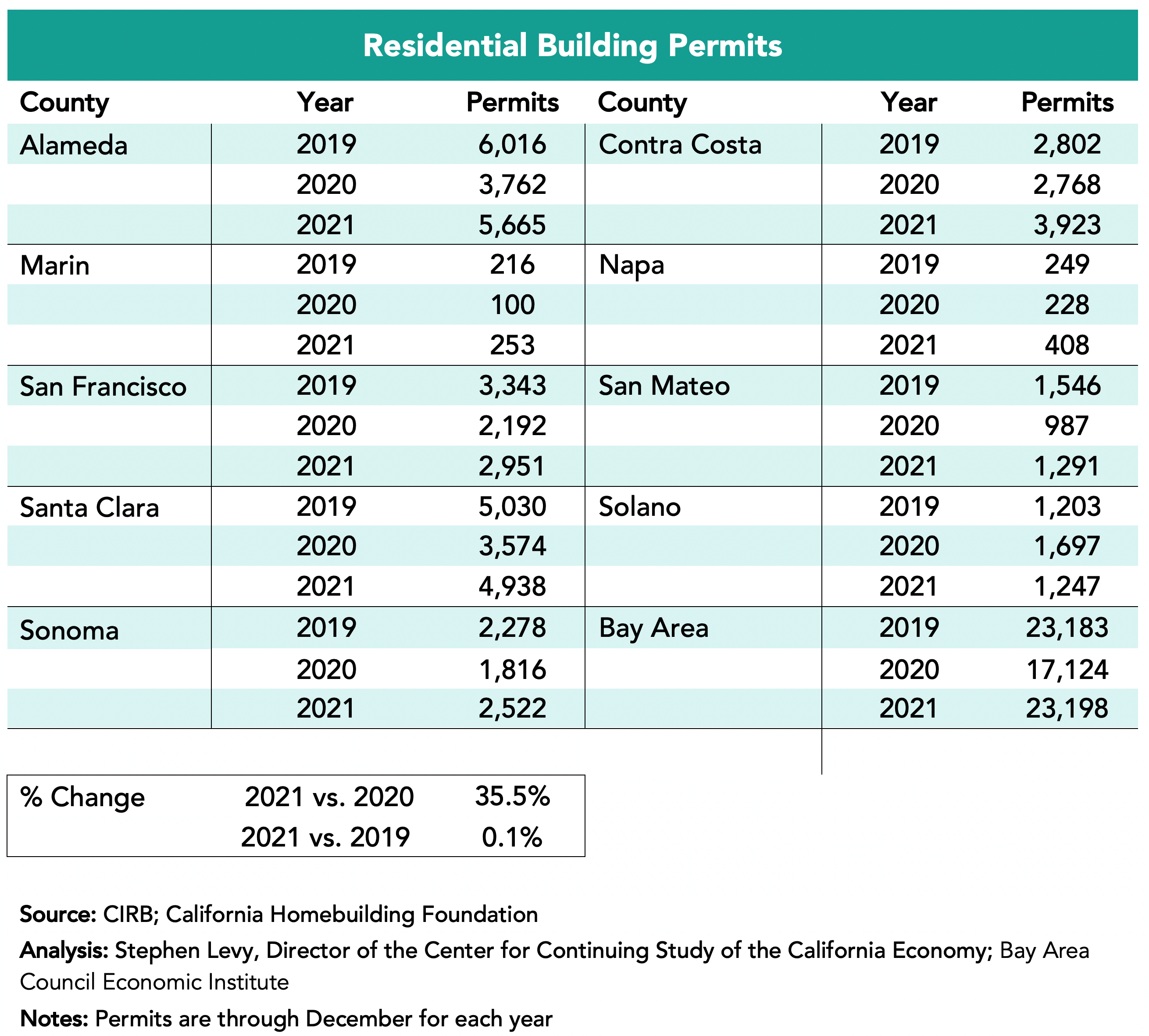Bay Area Economy Continues Recovery but Still Lags the Nation
March 31, 2022
The Bay Area added 24,500 jobs in February and outpaced the nation in job growth over the past 12 months but still lags the state and nation in job recovery since April 2020
The highlights:
• Bay Area jobs increased by 6.4% between February 2021 and 2022 compared to a 4.6% increase in the nation and 6.8% gain in California.
• The Bay Area unemployment rate in February 2022 was 3.4% compared to 2.7% in the pre-pandemic low.
• Venture capital funding reached a record $105.4 billion in 2021 up from $49.8 billion in 2020.
• March 2022 brings major crosscurrents to the global, national and regional economy with the Russian invasion of Ukraine, rising interest rates amidst continuing high inflation, the easing of COVID cases and related activity restrictions and the ongoing Bay Area challenges of housing, transportation and competitiveness.
• Bay Area jurisdictions have been given large increases in their housing goals for the next eight years as a result of state legislation and policy to reduce overcrowding and increase affordability. Each jurisdiction is in the process of updating their Housing Elements in 2022 to meet state and regional policy goals and requirements.
The Bay Area Outpaced the Nation in Recent Job Growth
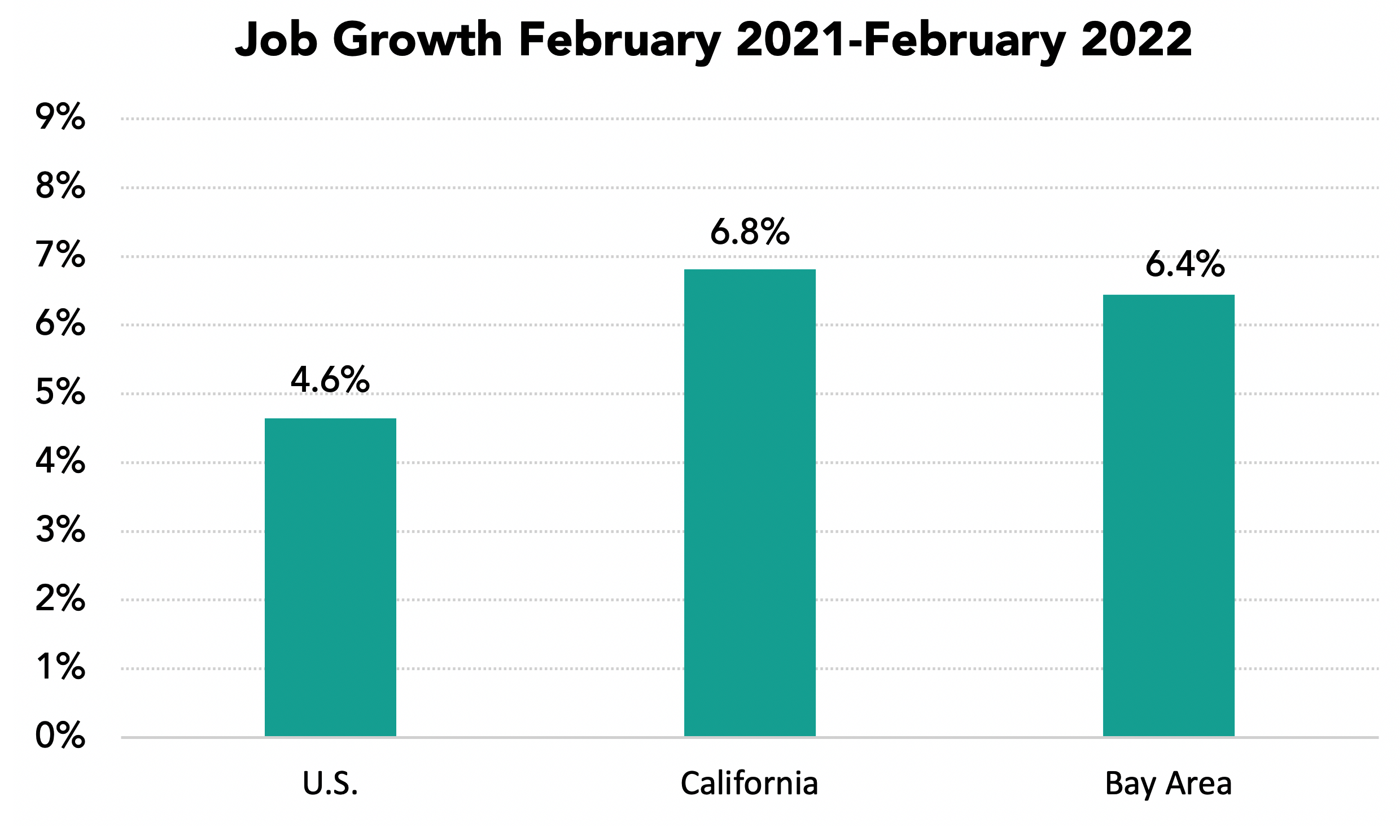
Bay Area jobs increased by 6.4% between February 2021 and February 2022 outpacing the national 4.6% growth rate. The region still lags the nation and state in the percentage of jobs recovered since April 2020 as a result of the large job losses in 2020.

By February 2022 the region had recovered 75.8% of the jobs lost between February and April 2020. This is a lower recovery rate than the state and nation, though the region has closed the gap in recent months.
The Bay Area added 240,300 jobs in the past year led by a gain of 95,000 in the San Francisco metro area though SF has recovered just 71.4% of the jobs lost between February and April 2020. The San Jose metro area added 58,900 jobs and by February 2022 had recovered 79.7% of the jobs lost between February and April 2020. The Oakland metro area added 57,000 jobs.
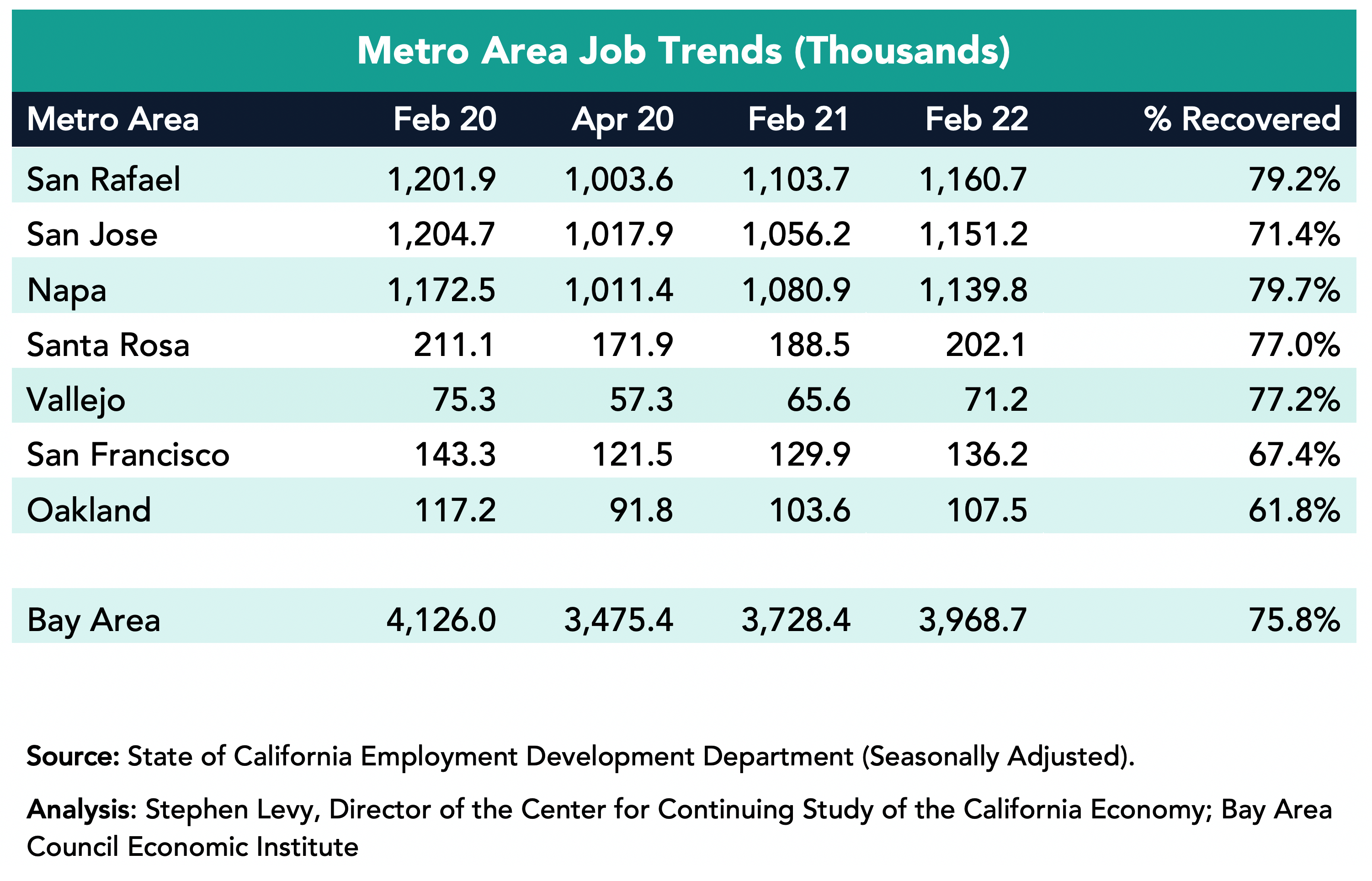
Unemployment Rates Fell to 3.4% in the Region in February 2022 from 6.7% in February 2021.
The lowest rates were in the San Rafael metro area (2.7%) followed by the San Francisco and San Jose metro areas (2.9%) in February 2022.
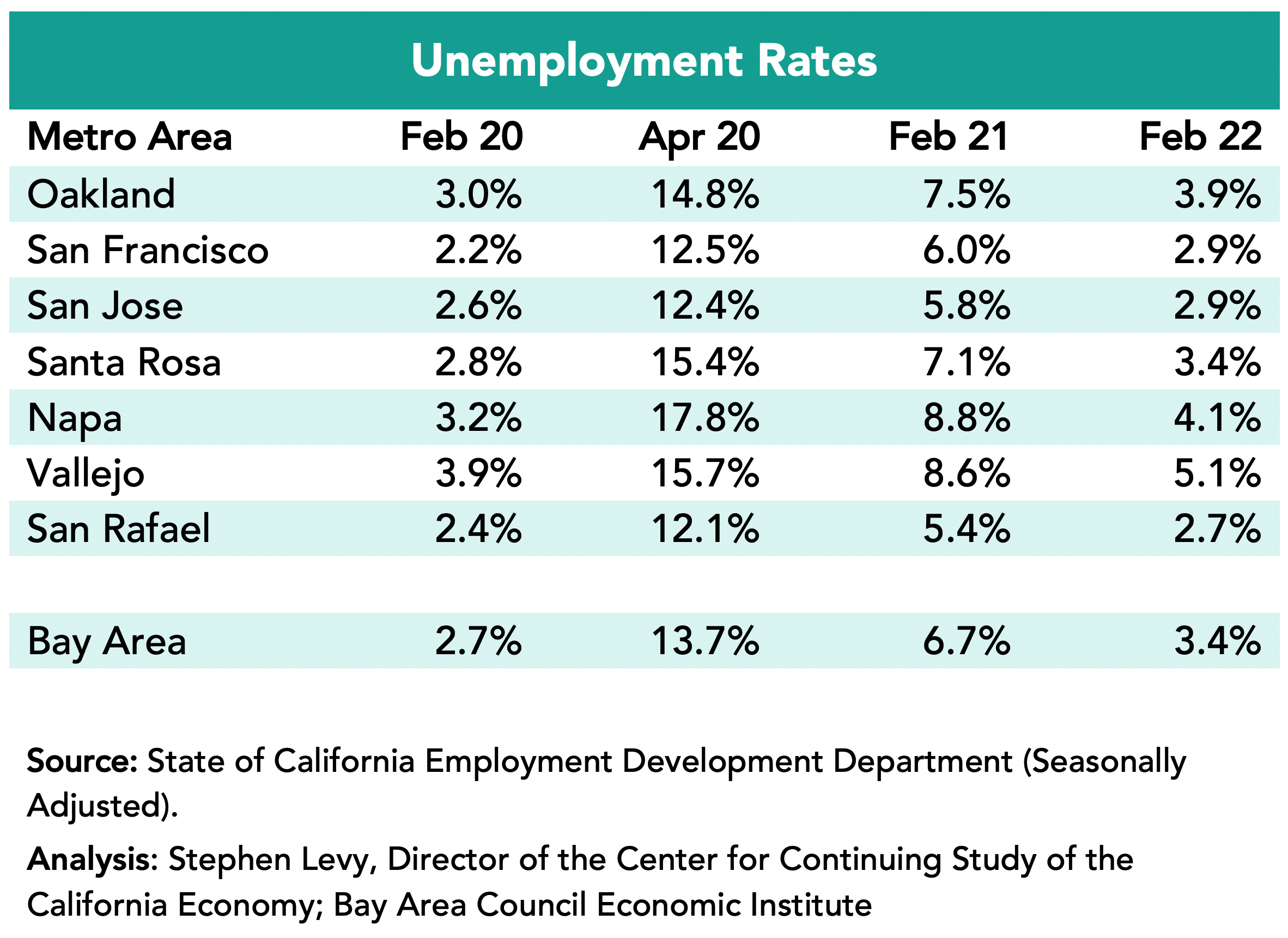

But 90,000 Workers Have Not Rejoined the Workforce Since February 2020
Residents who are not in the labor force are not counted as unemployed. As a result, the number of unemployed residents can decline while some are still prevented by choice or lack of child care or work in industries that have not fully recovered.
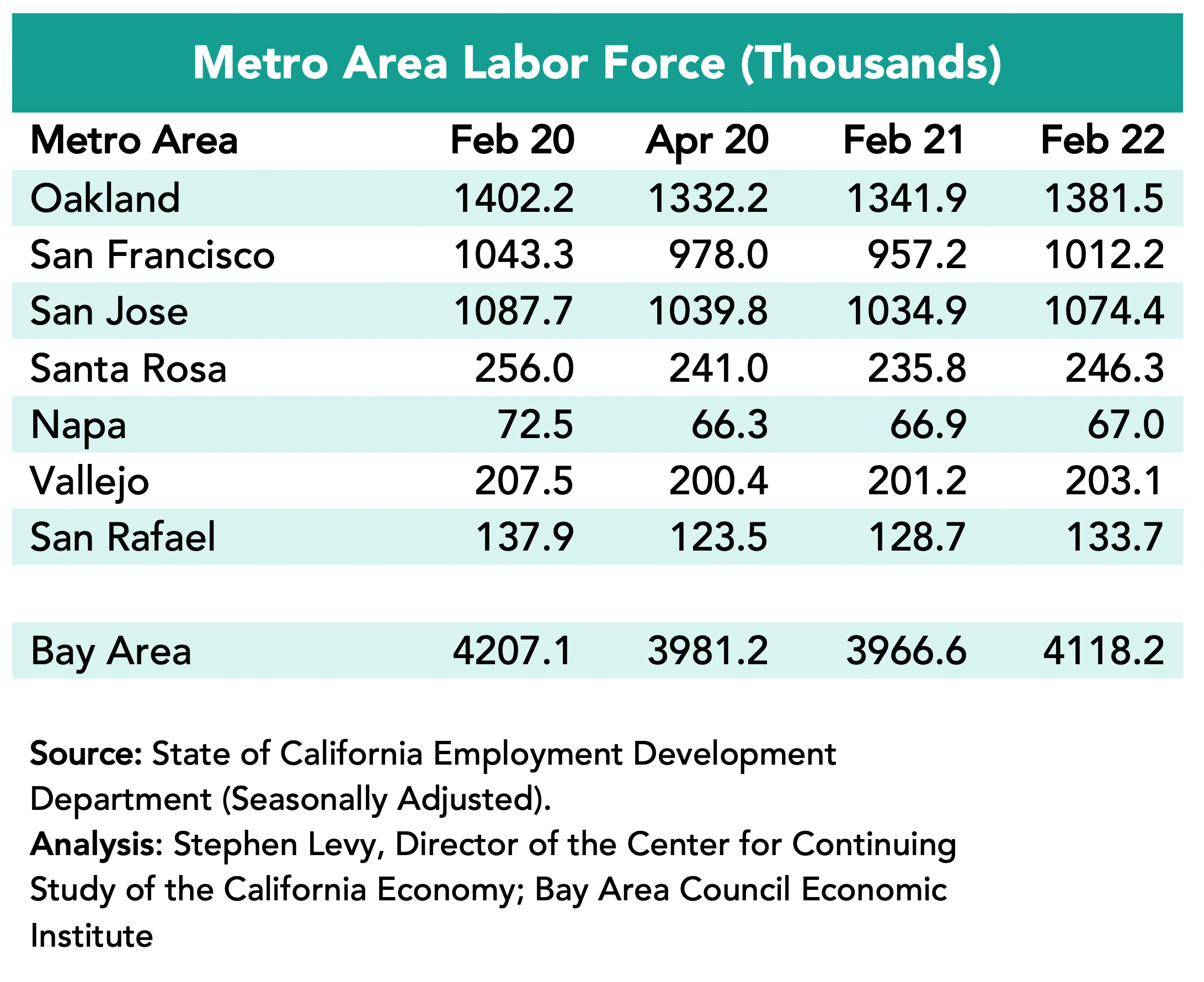
Industries Were Affected Differently
Three sectors—Manufacturing, Transportation and Warehousing, and Information—exceeded pre-pandemic job levels in February 2022 and Professional and Business Services was close to full recovery. On the other hand, the Leisure and Hospitality sector recovered only 64.7% of lost jobs by February 2022 though travel and tourism are now picking up again. The Government sector still has fewer jobs now than in April 2020. The Construction and Education and Health Services sectors have also recovered most of the jobs between February and April 2020.
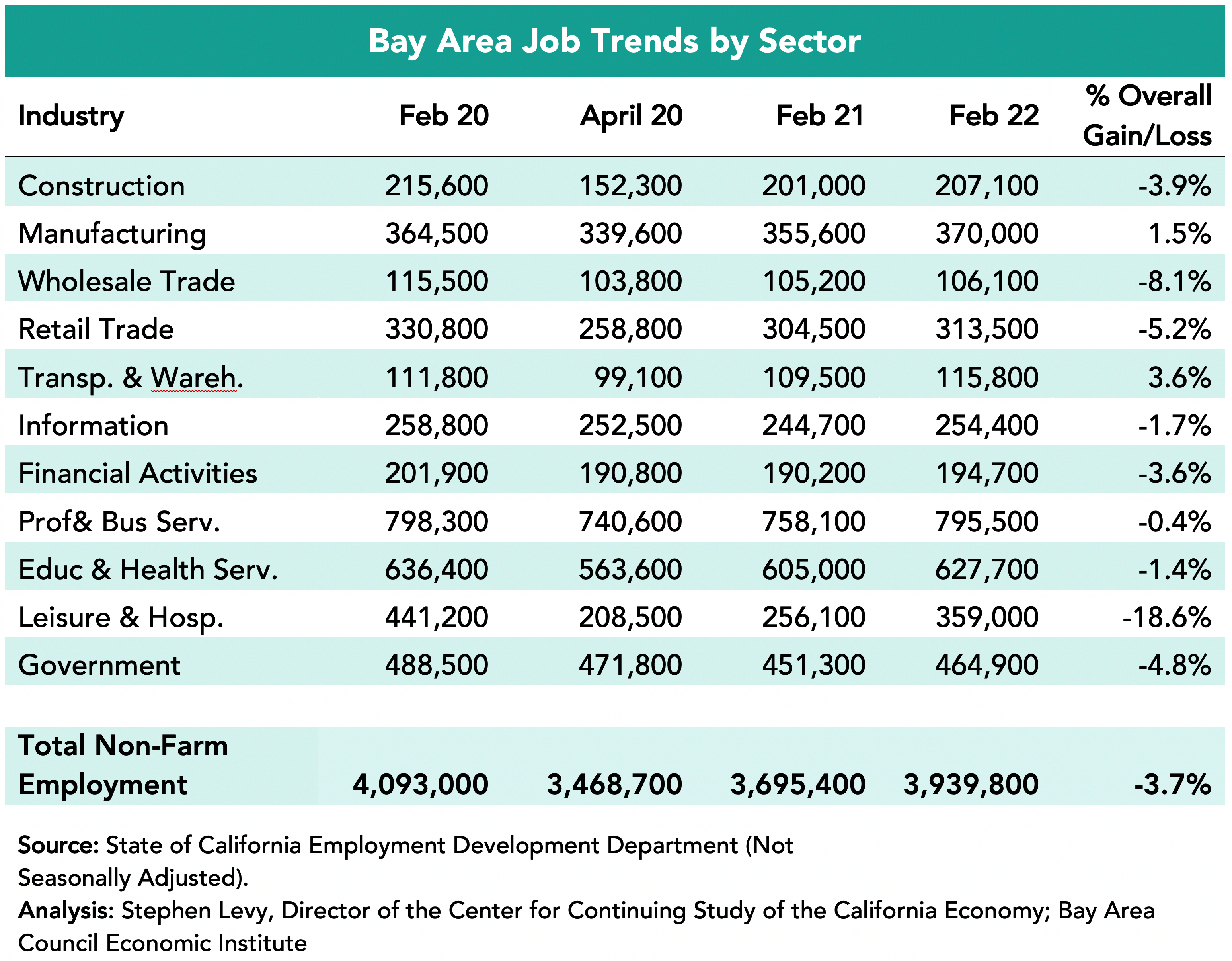
Housing Permits Rebound to 2019 Levels in 2021
Housing permit levels are up 35.5% in 2021 over 2020 levels and equaled permit levels in 2019. This year all Bay Area cities are required to update their Housing Elements to meet greatly increased regional and local jurisdiction housing goals. Below is a link to a report released on March 18th that I prepared at the request of the Silicon Valley Community Foundation to help residents understand and engage in their city’s Housing Element update process. Although the report focuses on five Midpeninsula cities—Cupertino, Menlo Park, Mountain View, Palo Alto and Sunnyvale—it has broad applicability for other communities. The report is part of an engagement effort led by SV@Home with local partners.
